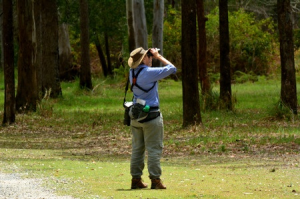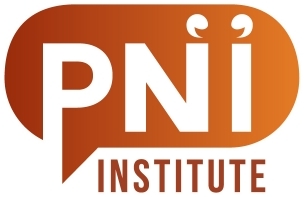 What do the people involved in story projects need? What do you need as a facilitator? Did you get permission from anyone to do the project? Did you get funding? What do those people need? What do the project’s participants need? What are the needs of people who belong to the community but know nothing about the project, or don’t have time to participate in it, or aren’t interested, or don’t like what you are doing? What is the best way of taking all of these (possibly conflicting) needs into account without derailing your project? We will talk about all of these things – and more – in our next PNI Institute call.
What do the people involved in story projects need? What do you need as a facilitator? Did you get permission from anyone to do the project? Did you get funding? What do those people need? What do the project’s participants need? What are the needs of people who belong to the community but know nothing about the project, or don’t have time to participate in it, or aren’t interested, or don’t like what you are doing? What is the best way of taking all of these (possibly conflicting) needs into account without derailing your project? We will talk about all of these things – and more – in our next PNI Institute call.
The call will be at:
- Date Friday May 13 (the second Friday)
- Time California 7 00 New York 10 00 London 15 00 Amsterdam 16 00 South Africa 17 00 Melbourne 02 00 (Saturday)
- Place We are switching from Google Hangouts to Zoom. Please follow this link to get started. You will need to download the Zoom client. Here is a video that shows you how to join the meeting.
Last time: Getting people to tell stories
We started the discussion by talking about ice breakers, and how they can help people connect to each other in a group. We talked about how getting-to-know-you games (What flavor of ice cream are you? What animal are you? What would you take to a desert island?) could be either the best or worst way to start a session of story sharing.
How could an ice-breaker be a bad thing? Because of variation in goals, topics, and participants. The topics we ask people to share stories about can vary all the way from trivial things like snack foods to serious things like illness or trauma. The goals of story projects can range from team-building to problem-solving to information-gathering to collective learning. And the participants in sessions can have all sorts of personalities, backgrounds, reasons to be there, hopes, and fears.
Sometimes it’s better to keep the stories in front as you start a session and get people talking. In such a case, having people play a getting-to-know-you game would lead to fewer and less authentic stories being shared. Keeping the stories in front is appropriate when the topic is sensitive, participants are wary, and your goal is to deal with difficulties. When you need people to feel safe to speak, sometimes it’s best to let them keep more facts about themselves to themselves, even within a face-to-face group.
At other times, it’s best to start out with the people in front, then ask them to start telling stories as they move deeper into the topic. This is best when the topic is not threatening, the people are confident and ready to explore, and the goals are less ambitious. At times like this, a quick getting-to-know-you game will lead to more stories being told more freely. This is also a great way to start when you need people to work in a team, such as during a sensemaking session.
Next we talked about variation in story collection methods. We talked about how collecting stories over the internet is different from collecting stories in interviews or group sessions. Something that works well for getting people to share stories in person will not work, not even in translation, if you are asking people to type stories into boxes on web forms.
Then we slid into talking about differences between written and spoken stories, and how people shape their stories differently when they are speaking or writing.
I recalled a time when some colleagues and I were collecting stories in a real-time story session, and because we were worried that our notes would be incomplete, we gave people the opportunity to write some notes about their story on the story form (which normally only includes questions about the story). We did this only to get a little clerical help from the participants with the task of getting the stories recorded. To our surprise, some of the people at the session seemed to enjoy the opportunity, and they spent some serious energy writing up a second version of each story they told.
The stories people wrote down were different from the stories they told. Their verbal stories were full of emotion, but their written stories were more factual and careful, like newspaper articles. It was as though people were more aware of possible scrutiny when they wrote down their stories. This presented us with a paradox. People seemed to value the opportunity to be heard more fully (and perhaps more formally) in writing, but at the same time, they responded to the written mode of storytelling by taking on a more guarded tone.
Somebody asked what we did with the two versions of the stories. Did we keep them separate or merge them? We merged them, but I remember feeling nervous as we did so. I didn’t want to lose the emotion and spontaneity of the spoken form, but I also wanted to respect the dignity and authority people obviously valued as they wrote about their stories.
We then talked about how some people might find the task of writing down their stories intimidating, especially if their skills in reading and writing were not well developed. On the other hand, other people might find the opportunity to write down their stories liberating, especially if their skills of articulating their thoughts in speech (and in front of other people) were not well developed.
In either case, the opportunity to have multiple ways of contributing a story seems to help people feel not only more satisfied with the experience, but also more fully heard. I’ve seen that on several projects that offered people more than one way of contributing. Even if people didn’t make use of multiple modes of contribution, they seemed happy to find out that they had options. It’s like going to a restaurant. If the restaurant serves only one thing, you either go in or you don’t. If it has a menu, you go in and see what works for you.
That whole situation of asking people for clerical help led me to remember my early days in working with stories. On our very first projects, we didn’t ask people questions about their stories. We answered all of the questions ourselves, because we thought people wouldn’t or couldn’t answer questions about their own stories in ways that would be useful. After several projects where we had to spend far more time than we expected marking up stories, we decided to start asking people just a few questions about their stories. We were amazed (and embarrassed) to discover that people’s answers to questions about their own stories were not only useful, but more useful than any analysis we could provide.
That was a situation where asking people for clerical help led us to discover a whole new world of participatory sensemaking. It was one of the huge win-win moments that made PNI what it is.
So I wondered, could this help-us-out moment (asking people to jot down some notes about their stories) have within it the seeds of another new avenue for fruitful participation? What benefit could asking people to both tell and write stories bring to sensemaking? It’s true that we often ask sensemaking participants to retell written stories in their own words. So making the transition from written to spoken stories has been part of PNI for a while. But could the transition from telling to writing be another win-win we hadn’t noticed? The idea invites exploration.
This is why, by the way, I think it’s imperative to continually put yourself into situations where everything is bound to go wrong. In that project we took the desperate step of asking people for clerical help because we promised to support a quick-turnaround project that would run its course in a few days, so we were under pressure to reduce the time requirement for recording and transcription.
Here’s what I think. The more we push ourselves out of our comfort zones and try things that probably won’t work, the more opportunities we provide for great ideas to find us. I don’t think anybody has great ideas on purpose, even though we sometimes pretend we do afterwards. At least that hasn’t been my experience. Great ideas usually follow me around for a while before I notice them. The trick, I think, is to set up conditions where great ideas come looking for you, and keep your eyes open so you notice them when they do.
Speaking of trying out new things, one of the reasons I’m excited about using Zoom for our monthly PNI2 calls is that with Zoom you can set up “breakout rooms” for smaller groups to talk. We don’t have enough people calling in to do this yet, but I’m hoping that when we get more people on the call, we can start trying out story methods we read about. There are dozens of methods I’m vaguely aware of that I’ve never tried. On some of our monthly PNI2 calls, we could experiment with some of these methods. That’s an ambition I hope we can look back on someday with satisfaction.
Anyway, next we started talking about how it’s easier to collect stories when you’re aware of how they are flowing around you. I said that in my experience, people who have been involved with stories in some way for decades, whether they love folk tales or novels, have a habit of telling stories before audiences, or just can’t say no to a well-put-together TV or movie drama, tend to be better at collecting stories than people who don’t habitually “live with” stories in some way. On my part, I fell naturally into story work because I tell a lot of stories in conversation, and because I’ve been a huge fan of folk tales and novels since I could read. People who have not spent a lot of time immersed in stories have a harder time getting started in story work. They can still collect stories well, but they need to spend some time becoming more familiar with the shapes and forms of stories.
 We talked about how this is analogous to bird-watching. A person who has been watching birds avidly for decades will walk through the forest with a detailed awareness of the many things going on around them. They will hear a bird sing or see a bird flit by, and they will not only identify the species, but think about how that bird fits in to the season and ecology of the area. People who have been living with stories for a long time have a similar awareness of the stories flowing around them. Anyone can develop such an awareness, just like anyone can become an expert birder. It just takes time and attention.
We talked about how this is analogous to bird-watching. A person who has been watching birds avidly for decades will walk through the forest with a detailed awareness of the many things going on around them. They will hear a bird sing or see a bird flit by, and they will not only identify the species, but think about how that bird fits in to the season and ecology of the area. People who have been living with stories for a long time have a similar awareness of the stories flowing around them. Anyone can develop such an awareness, just like anyone can become an expert birder. It just takes time and attention.
Somebody brought up the point that some bird-watchers get carried away and take bird-watching too seriously. They get so obsessed with counts and lists and labels that they lose the ability to just walk around and enjoy nature. At some point expert knowledge becomes an obstacle to enjoyment, and maybe even to effectiveness. We wondered, are there people who overdo attention to stories?
I mentioned that I’ve made it a point in my work to challenge blanket claims that “everyone thinks in stories” and “man is the storytelling animal.” Certainly thinking in stories is one of the ways in which we think and communicate, but it is not the only way or even the dominant way. Thinking in stories is something that goes deep down into the identity of anyone who makes story work into a career. But not everybody thinks in stories, not to the extent that we do. The way I say it is, nobody never tells stories, but some people tell stories a lot more than other people do. Stories complement our other modes of thought and expression, but claiming that stories are the way we think and express ourselves would be like saying only birds live in a forest.
On the other hand, we all admitted that we overdo our attention to stories, and that our attention does create obstacles in our work. I talked about how I call people who pay too much attention to stories “story performers,” and how I’ve unwillingly become one as I’ve placed more and more of my identity into working with stories. We talked about how natural storytellers (and natural story workers) are like debut novelists who write great things because they don’t know they’re writing great things. Authors almost always struggle to follow up a popular first novel with something substantial because of that awful, obsessive awareness. At some point it’s a struggle to notice anything else in the forest but the birds.
This led us to talk about the Zen  concept of “beginner’s mind.” Can a person who has been doing story work for a long time come back to the way they worked and thought when they started? Can they reboot their knowledge? We thought that reading more about the beginner’s mind might be a good idea.
concept of “beginner’s mind.” Can a person who has been doing story work for a long time come back to the way they worked and thought when they started? Can they reboot their knowledge? We thought that reading more about the beginner’s mind might be a good idea.
Somebody mentioned that this is what good teachers do, that they look back and imagine what it was like to not know something, so they can help people learn it. A true beginner’s mind goes even further, by actually getting to the point of temporarily wiping away everything we know so we can learn something new.
But here’s the question: how do you un-story? Thinking in stories is such a way of life that it’s difficult to imagine leaving it behind, even temporarily. (Maybe a story fast would help.)
Then the conversation circled back to where it started, which was getting people to tell stories. Somebody mentioned that cultivating a beginner’s mind is like being ready to listen to a story. You can’t just go up to a person and click a button that says “output one story.” You need to prove to that person that you are truly listening to what they have to say. You have to listen past the story you thought you were going to hear, past the story you want to hear, and past the story you dread hearing, before you can hear the story they want to tell. You have to empty yourself so they can fill you.
Come to think of it, that’s what little kids – the ultimate beginners – do. There’s a reason people say “they’re like sponges at that age.” Our challenge is to remember how to be story sponges. It starts with humility, respect, courage – listening is always an act of courage – and openness to experience.






